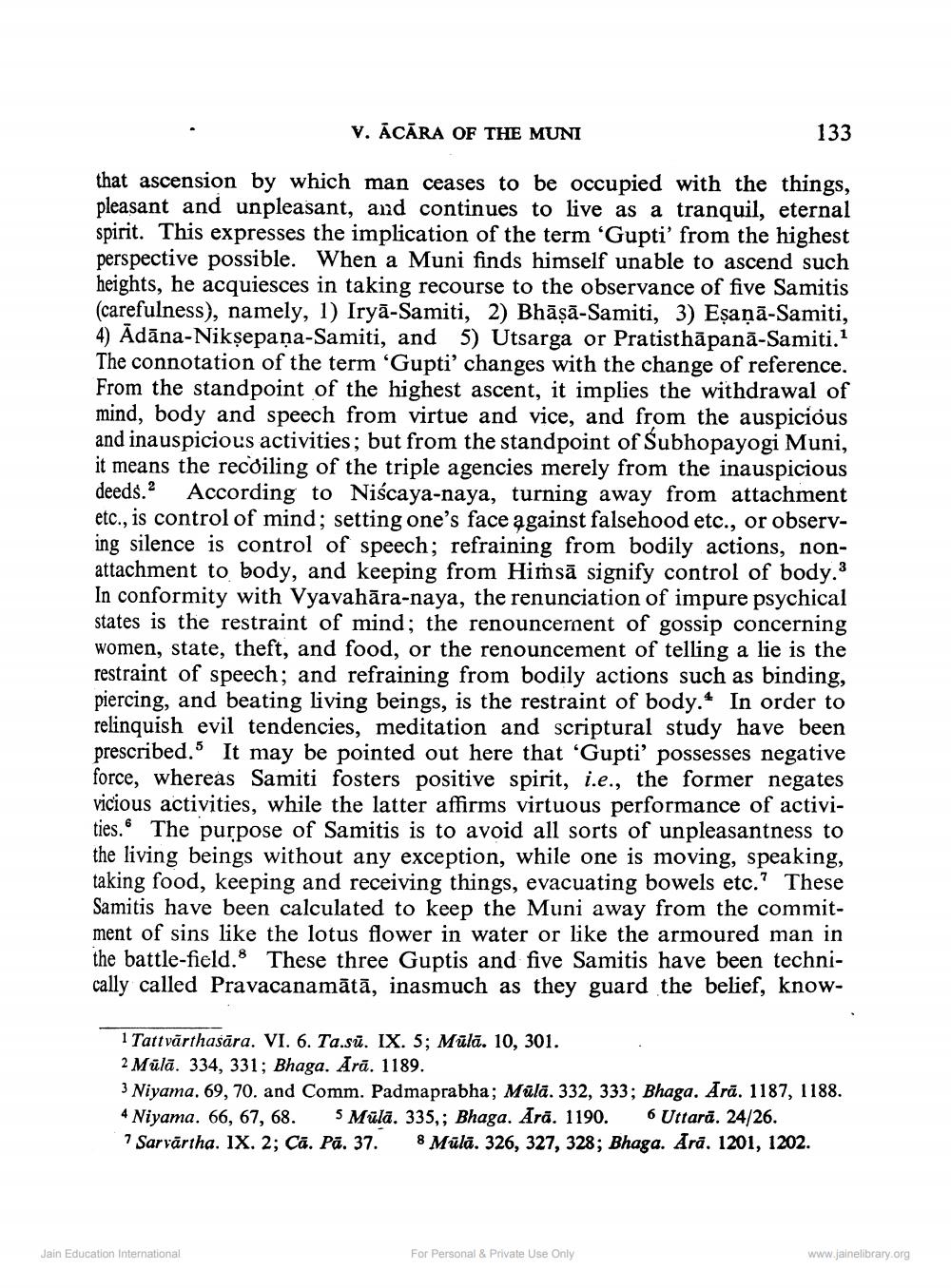________________
V. ĀCĀRA OF THE MUNI
133
that ascension by which man ceases to be occupied with the things, pleasant and unpleasant, and continues to live as a tranquil, eternal spirit. This expresses the implication of the term 'Gupti' from the highest perspective possible. When a Muni finds himself unable to ascend such heights, he acquiesces in taking recourse to the observance of five Samitis (carefulness), namely, 1) Iryā-Samiti, 2) Bhāṣā-Samiti, 3) Eșaņā-Samiti, 4) Adāna-Nikșepaņa-Samiti, and 5) Utsarga or Pratisthāpanā-Samiti.1 The connotation of the term 'Gupti' changes with the change of reference. From the standpoint of the highest ascent, it implies the withdrawal of mind, body and speech from virtue and vice, and from the auspicious and inauspicious activities; but from the standpoint of Subhopayogi Muni, it means the recoiling of the triple agencies merely from the inauspicious deeds. According to Niscaya-naya, turning away from attachment etc., is control of mind; setting one's face against falsehood etc., or obserying silence is control of speech; refraining from bodily actions, nonattachment to body, and keeping from Himsā signify control of body.3 In conformity with Vyavahāra-naya, the renunciation of impure psychical states is the restraint of mind; the renouncernent of gossip concerning women, state, theft, and food, or the renouncement of telling a lie is the restraint of speech; and refraining from bodily actions such as binding, piercing, and beating living beings, is the restraint of body.. In order to relinquish evil tendencies, meditation and scriptural study have been prescribed. It may be pointed out here that 'Gupti' possesses negative force, whereas Samiti fosters positive spirit, i.e., the former negates vicious activities, while the latter affirms virtuous performance of activities. The purpose of Samitis is to avoid all sorts of unpleasantness to the living beings without any exception, while one is moving, speaking, taking food, keeping and receiving things, evacuating bowels etc.? These Samitis have been calculated to keep the Muni away from the commitment of sins like the lotus flower in water or like the armoured man in the battle-field. These three Guptis and five Samitis have been technically called Pravacanamātā, inasmuch as they guard the belief, know
1 Tattvārthasāra. VI. 6. Ta.sū. IX. 5; Mülā. 10, 301. 2 Mülā. 334, 331; Bhaga. Arā. 1189. 3 Niyama. 69, 70. and Comm. Padmaprabha; Müla. 332, 333; Bhaga. Arā. 1187, 1188. 4 Niyama. 66, 67, 68. SMülā. 335,; Bhaga. Arā. 1190. Uttarā. 24/26. 7 Sarvärtha. IX. 2; Cā. Pā. 37. 8 Mülā. 326, 327, 328; Bhaga. Arā. 1201, 1202.
Jain Education International
For Personal & Private Use Only
www.jainelibrary.org




